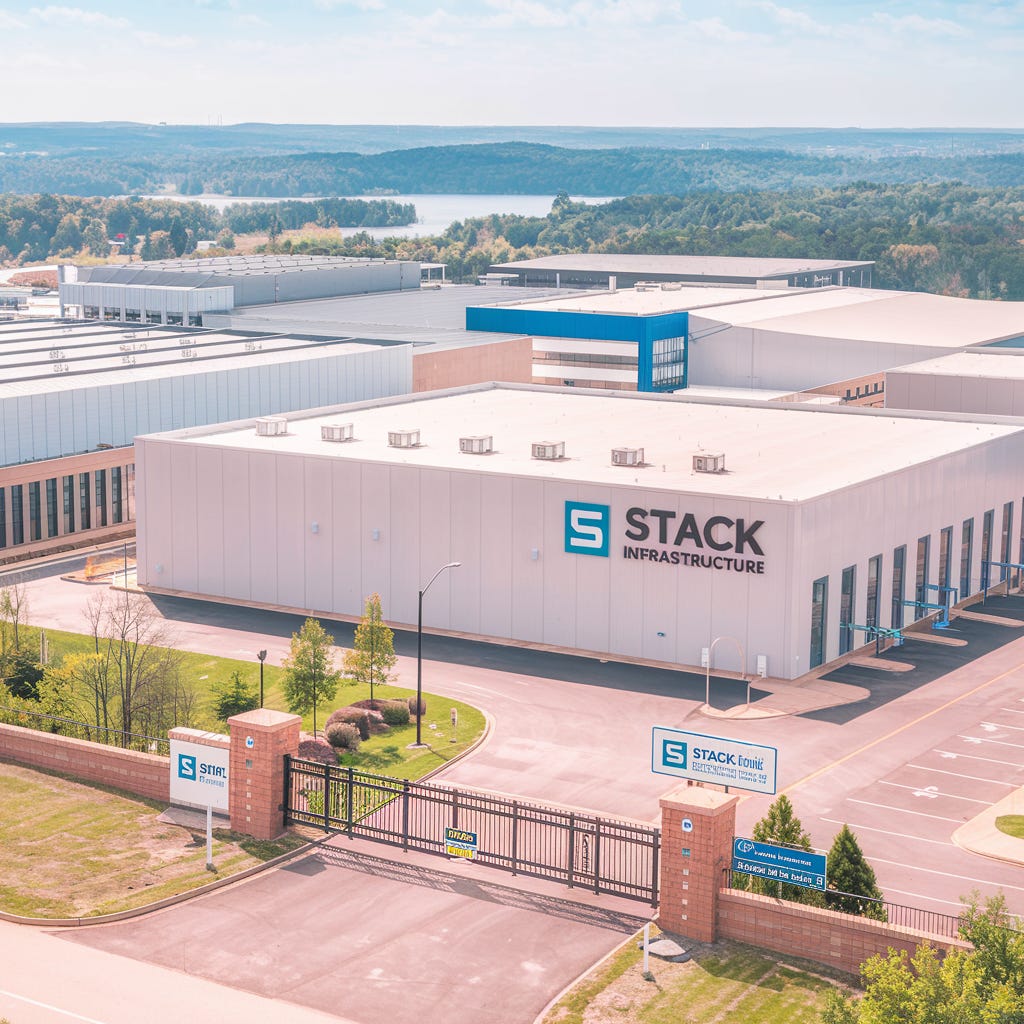What STACK’s $4B Move Says About the Future of Hyperscale Infrastructure (and Why It’s All Green)
Most developers are still drawing blueprints.
STACK Infrastructure is already building the next airport for the AI era…
In March 2025, STACK Infrastructure secured $4 billion in green financing to power a bold new vision:
a 1+ gigawatt hyperscale data center campus on 500 acres in Stafford County, Virginia.
On the surface, this is a massive infrastructure project.
Zoom out, and it’s a signal of something much larger.
It’s a clear sign that green financing is becoming the new backbone of hyperscale development, and that STACK intends to lead the next era of digital infrastructure not just with scale, but with sustainability.
The Strategic Shift: From Loudoun to Stafford
Northern Virginia has been the crown jewel of global data center development for over a decade. But land is running out. Power is constrained. Community opposition is rising.
While competitors remain locked in bidding wars over parcels in Loudoun and Prince William counties, STACK saw the next move: Stafford County.
The Stafford Technology Campus will include:
Over 1.8GW of planned power delivery (via six Dominion substations)
Up to 24 data centers across 500 acres
5.5 million square feet of data center capacity
$80M in projected annual tax revenue for the county
$58M in infrastructure upgrades (water and sewer)
Hundreds of permanent jobs and 1,000+ skilled trade roles during peak construction
This isn’t a typical expansion. It’s the digital equivalent of a new international airport, designed to meet the needs of AI, cloud, and machine learning at hyperscale.
Why Green Financing Is the Real Story
STACK’s success isn’t just in size or speed, it’s in structure.
This $4 billion financing round isn’t traditional debt. It’s green financing, tied to measurable sustainability outcomes like:
Renewable energy sourcing
Water-efficient cooling systems
Low-carbon construction materials
Battery and HVO-based backup power trials
Since 2019, STACK has:
Raised $9B for Virginia projects alone
Topped $20B in global capital commitments
Achieved 100% renewable energy use across its Americas portfolio
In an industry facing growing scrutiny from regulators, investors, and local governments, this isn’t a PR move. It’s strategic differentiation.
Green financing gives STACK something other developers struggle to secure:
Access to low-cost capital, community goodwill, and ESG-aligned growth at hyperscale.
The Bigger Picture: The Rise of Sustainable Hyperscale
As demand for AI, cloud, and compute capacity continues to accelerate, the next generation of hyperscale infrastructure will hinge on one key question:
Can you scale responsibly—without overwhelming the grid, losing community trust, or falling out of alignment with investor mandates?
STACK believes the answer lies in a new playbook:
Secure land early in constrained but high-demand regions
Align development with ESG standards to unlock green financing
Engineer energy and water efficiency into every build
Diversify regionally to manage risk and serve global clients
Lead with transparency around sustainability metrics
With expansions underway in Portland and Toronto, STACK is clearly executing that playbook.
Operator’s Edge: The Playbook Behind STACK’s $4B Green Financing
STACK’s $4B deal didn’t happen by chance. It reflects a deliberate convergence of site strategy, financial engineering, and ESG storytelling.
If you're an investor, developer, or strategist—here’s what you can extract and apply now.
1. The 5 Elements STACK Likely Used to Qualify for Green Financing
To secure green financing at this scale, STACK had to build for more than demand. They had to design for qualification. Here's what that likely looked like:
1.1 – Renewable Energy Strategy
They committed to (and verified) 100% renewable energy sourcing in the Americas. Most green loans require a clear plan, not just RECs, but real PPAs or on-site generation.
1.2 – Energy Efficiency Design
Advanced cooling systems, efficient electrical design, and PUE targets. Lenders want to see third-party certification (LEED, ENERGY STAR, or custom benchmarks).
1.3 – Sustainable Water Use
STACK’s investments in water-efficient infrastructure likely reduced WUE metrics and showed commitment to regional water stewardship, a growing lender concern.
1.4 – Low-Carbon Construction
Use of recycled steel, low-carbon concrete, and lifecycle carbon accounting gives lenders confidence in embodied carbon reductions.
1.5 – Green Financing Framework (GFF)
STACK created a GFF aligned with ICMA’s Green Bond Principles and the LSTA’s ESG loan standards, giving their debt raise a clear ESG signal.
⚡ Lesson: Green financing is no longer about what you plan to build—it's about what you’ve already engineered into the business model.
2. What This Means for Capital Markets
STACK’s deal is part of a broader capital market trend you can’t afford to ignore:
✅ ESG capital is cheaper, faster, and more abundant than conventional debt, if you can meet the standards.
✅ Sustainable finance mandates are rising among institutional investors, especially in Europe, but spreading globally.
✅ Green bonds hit $1 trillion+ in issuance by 2025, and data centers are now squarely in the spotlight.
In a world of rising rates and rising scrutiny, green capital gives you margin and speed.
3. Your Move: The Hyperscale Developer’s Checklist
Thinking about your own project? Here's a simplified 6-point checklist to help you qualify and pitch for green debt in 2025:
Land with long-term power strategy (including future grid capacity)
Documented renewable energy roadmap (with signed PPAs or procurement letters)
Design-stage energy modeling + target PUE < 1.4
WUE < 1.2 and sustainable water use plan
Low-carbon construction plan (vendor commitments + reporting)
Third-party GFF or ESG rating firm pre-issuance opinion
Bonus: If your project is in a region with public funding incentives (like Virginia, Oregon, or Canada), stack those credits with green financing to reduce your cost of capital even further.
🧠 Final Thought
STACK isn’t just building bigger, it’s building smarter.
By leading with green capital, it’s unlocked faster timelines, more favorable debt, and community support others can’t buy.
In the hyperscale race, sustainability isn’t the constraint.
It’s the unlock.

